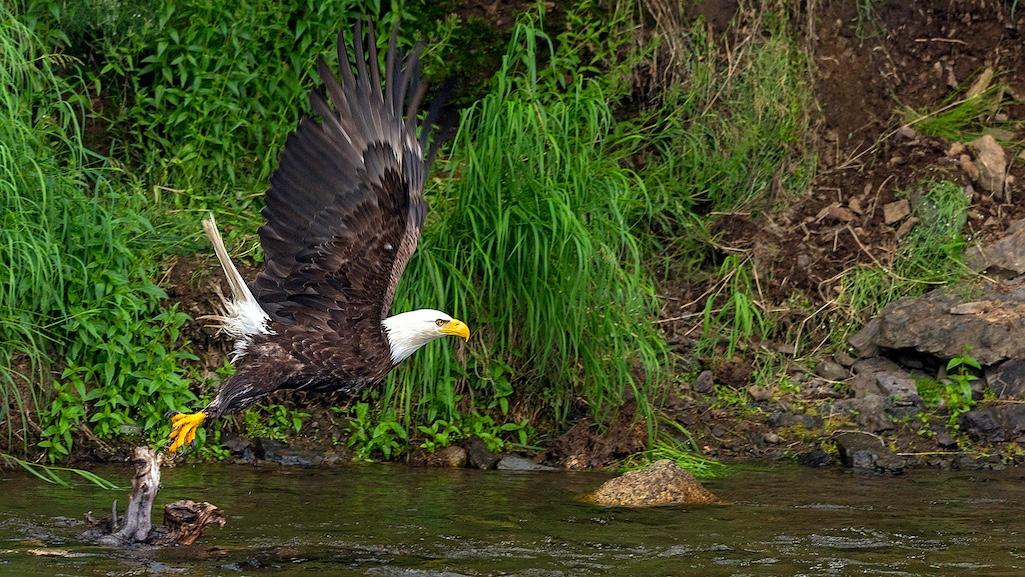
The Biden administration on Thursday finalized three rules it said would strengthen the Endangered Species Act, but conservation groups viewed the overall effort to reverse Trump administration changes to the bedrock legislation as remaining industry friendly.
“This was a massive missed opportunity to address the worsening extinction crisis,” said Stephanie Kurose, a senior policy specialist at the Center for Biological Diversity. “We needed bold solutions to guide conservation as the climate crisis drives more and more animals and plants to extinction. Instead we’re mostly still stuck with the disastrous anti-wildlife changes made by the previous administration.”
The administration said the changes would “restore important protections for species and their habitats; strengthen the processes for listing species, designating of critical habitat, and consultation with other federal agencies; and ensure a science-based approach that will improve both agencies’ ability to fulfill their responsibilities under the Endangered Species Act.”
“As species face new and daunting challenges, including climate change, degraded and fragmented habitat, invasive species, and wildlife disease, the Endangered Species Act is more important than ever to conserve and recover imperiled species now and for generations to come,” said U.S. Fish and Wildlife Service Director Martha Williams. “These revisions underscore our commitment to using all of the tools available to help halt declines and stabilize populations of the species most at-risk. We will continue to use the best-available science when implementing the ESA — including when making listing and delisting decisions, designating critical habitat, developing protective regulations for threatened species, and consulting on federal actions.”
During President Donald Trump’s term his administration actively worked to weaken the ESA, passing regulations that both reduced the amount of habitat that could be protected for threatened and endangered species and which allowed for economics to come into play when listing decisions are made.
Before Trump left office, the Fish and Wildlife Service redefined “critical habitat” for a species as only areas physically occupied by a threatened or endangered species. Outside of those areas, what constitutes critical habitat would be left to the Interior secretary to determine. The Trump administration also directed federal agencies such as the Fish and Wildlife Service to take into account economic impacts resulting from the designation of critical habitat before making such a designation.
According to the Center for Biological Diversity, “[O]f the 31 harmful changes made in 2019 to the Act’s regulations, only seven are fully addressed and corrected in today’s final rules. Those include restoring the precautionary ‘blanket-rule’ for threatened species. Today’s finalized rules restored the long-standing prohibition on consideration of economic impacts when deciding whether to list species as threatened or endangered. The rules also remove barriers to designating as critical habitat unoccupied areas that are vital to the recovery of the nation’s wildlife and plants.”
However, the organization said the revised rules nevertheless “fail to undo changes made in 2019 to the consultation process that ignore cumulative impacts to listed species and in general make it far easier for industries to receive approval for projects that destroy the habitat of countless species nationwide.”
Defenders of Wildlife shared the center’s concerns.
“While the regulations restore some essential wildlife protections, we were hopeful for far more than the marginal win the Biden administration delivered today. Our nation’s threatened and endangered species are under constant attack and the Endangered Species Act is the only thing standing between them and extinction,” said Jamie Rappaport Clark, president and CEO of Defenders of Wildlife. “We appreciate the administration’s work on this matter, but at the end of the day much work remains to be done to ensure the Endangered Species Act can fulfill its critical lifesaving mission.”
Defenders said the rule changes invite “federal agencies to rely on speculative and unverified mitigation measures when analyzing agency actions that could jeopardize listed species or destroy or adversely modify critical habitat; and, invites federal agencies to ignore existing degraded conditions that have caused serious harm to listed species or critical habitat when considering the modification or relicensing of activities and existing facilities.”
Members of The Heritage Foundation, an organization that seeks more conservative philosophies reflected in public policy, have called for reinstatement of Trump’s rules pertaining to the ESA definitions for critical habitat and critical habitat exclusions as well as changes to the Migratory Bird Treaty Act to allow unintentional killings of birds. A paper written by a deputy solicitor in the Interior Department back in 2017 argued that penalties under the treaty could be applied only to intentional acts — hunting and trapping, for instance — that killed migratory birds. “Incidental” takings, such as the deaths of migratory birds that land on an uncovered pond of hazardous wastes, should not be penalized, the opinion stated.





